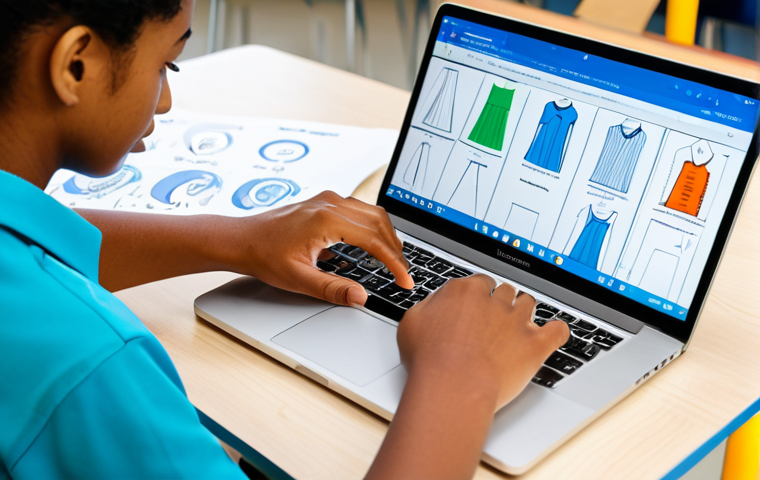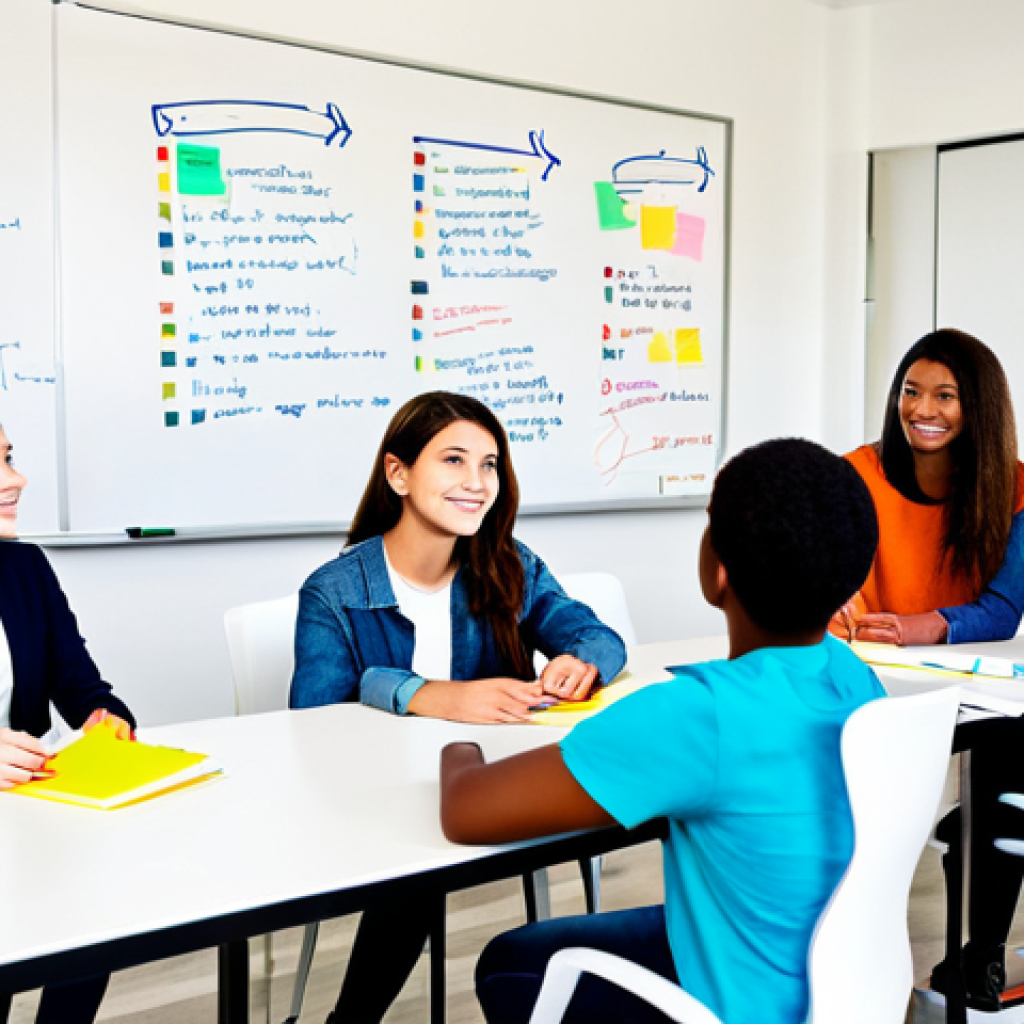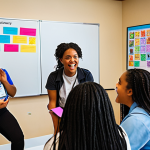Okay, here’s a blog-style intro about youth leaders and creative problem-solving for teens, tailored for an English-speaking audience:The teenage years are a rollercoaster, right?
And sometimes, those twists and turns bring some serious challenges. That’s where amazing youth leaders come in, those mentors who can guide teens toward finding innovative solutions to life’s little and big hurdles.
I’ve seen firsthand how a spark of creativity, nurtured by a supportive leader, can totally transform a young person’s perspective and future. In a world that’s changing faster than ever, empowering our youth with creative problem-solving skills is essential for their success and well-being.
It’s about more than just academics; it’s about equipping them to navigate real-world situations with confidence and ingenuity. It will boost not only academic capabilities, but their sense of self and confidence.
Teens are the future, and creative, out-of-the-box thinking is the future. Let’s explore this further below!
## Igniting the Spark: How Youth Leaders Can Cultivate CreativityYouth leaders stand as pivotal figures in guiding young minds toward innovative problem-solving.
Often, traditional academic settings don’t fully address the critical skill of creative thinking, leaving a gap that dedicated mentors can bridge. In my experience volunteering at a local youth center, I’ve seen firsthand how even simple activities, like brainstorming sessions with open-ended prompts, can unlock a hidden wellspring of creativity in teens.
It’s not about having the “right” answer, but rather about fostering an environment where teens feel safe to express unconventional ideas and explore different perspectives.
This approach can significantly boost their confidence and ability to tackle challenges, not only in school but also in their personal lives. Providing guidance and support, youth leaders can help young individuals develop skills that go beyond rote memorization, to thinking outside the box, experimenting, and feeling comfortable with the possibility of failure, all crucial components of innovation.
Fostering a Growth Mindset

Cultivating a growth mindset is essential for teens to embrace creative problem-solving. This means encouraging them to view challenges as opportunities for growth and learning, rather than as indicators of their abilities.
Youth leaders can promote this by sharing stories of successful innovators who faced setbacks and learned from their mistakes.
Providing Open-Ended Challenges
Presenting teens with open-ended challenges encourages them to think creatively and explore different solutions. These challenges can be anything from designing a community project to developing a sustainable solution for a local environmental issue.
The key is to avoid providing a single “correct” answer and instead encourage teens to explore multiple possibilities.
Encouraging Collaboration and Diversity of Thought
Creative problem-solving thrives in collaborative environments where diverse perspectives are valued. Youth leaders can foster this by creating opportunities for teens to work together on projects, encouraging them to share their ideas, and promoting a culture of respect and inclusivity.
Hearing different perspectives may spark a new idea or thinking point that they hadn’t thought of before.
Empowering Teens Through Design Thinking
Design thinking offers a structured, human-centered approach to creative problem-solving that can be incredibly empowering for teens. It involves understanding the needs of the people you’re designing for, generating ideas, prototyping solutions, and testing them in the real world.
I’ve run design thinking workshops with high school students and the results have been amazing. Watching them empathize with potential users, brainstorm wild ideas, and then refine those ideas into practical solutions is incredibly rewarding.
It’s not just about the final product; it’s about the process of learning, iterating, and developing a sense of agency. Design thinking gives teens a tangible framework for tackling complex problems and creating meaningful change in their communities.
Emphasizing User Empathy
The first step in design thinking is to empathize with the users you’re designing for. Youth leaders can guide teens through this process by encouraging them to conduct interviews, observations, and surveys to understand the needs and challenges of their target audience.
Iterative Prototyping
Design thinking emphasizes iterative prototyping, which means creating quick and dirty prototypes to test different ideas and gather feedback. This process allows teens to learn from their mistakes and refine their solutions based on real-world input.
Creating a Safe Space for Experimentation
Youth leaders should create a safe space where teens feel comfortable experimenting with different ideas and taking risks. This means encouraging them to embrace failure as a learning opportunity and celebrating their efforts, regardless of the outcome.
Leveraging Technology as a Creative Tool
Technology has become an integral part of modern life, offering endless possibilities for creative expression and problem-solving. Youth leaders can empower teens by teaching them how to use technology as a tool for innovation, whether it’s through coding, digital art, video production, or social media campaigns.
I remember one teen who, after learning basic coding skills in our after-school program, created a mobile app to connect local volunteers with community organizations.
It was a simple app, but it addressed a real need in our community and showcased the power of technology to create positive change. By equipping teens with digital literacy skills, we can unlock their potential to become creators and problem-solvers in the digital age.
Coding and App Development
Coding and app development offer teens a powerful way to create their own solutions to problems they identify in their communities. Youth leaders can provide resources and mentorship to help teens learn coding languages and develop their own apps.
Digital Art and Design
Digital art and design tools enable teens to express their creativity and communicate their ideas visually. Youth leaders can introduce teens to software like Photoshop, Illustrator, and Canva, and encourage them to experiment with different styles and techniques.
Social Media for Social Good
Social media can be a powerful tool for raising awareness about social issues and mobilizing support for positive change. Youth leaders can teach teens how to use social media effectively to advocate for causes they care about and engage their peers in meaningful conversations.
Building Resilience Through Failure
Failure is an inevitable part of the creative process, and it’s essential for teens to develop resilience in the face of setbacks. Youth leaders can help teens build resilience by reframing failure as a learning opportunity, encouraging them to persevere through challenges, and celebrating their efforts, regardless of the outcome.
One of the most impactful lessons I’ve learned as a mentor is that it’s okay to not get it right the first time. In fact, some of the most groundbreaking innovations have come from repeated failures and refinements.
The key is to foster a mindset where teens view failure not as a dead end, but as a stepping stone towards success.
Reframing Failure as a Learning Opportunity
Youth leaders can help teens reframe failure as a learning opportunity by encouraging them to reflect on what went wrong, identify areas for improvement, and apply those lessons to future projects.
Encouraging Perseverance
Perseverance is essential for overcoming challenges and achieving goals. Youth leaders can encourage teens to persevere by providing support, encouragement, and resources to help them stay motivated and on track.
Celebrating Effort and Progress
It’s important to celebrate effort and progress, regardless of the outcome. Youth leaders can recognize and reward teens for their hard work, dedication, and willingness to take risks.
Creating a Supportive Ecosystem
Ultimately, fostering creative problem-solving in teens requires creating a supportive ecosystem that values creativity, innovation, and collaboration.
This ecosystem should include not only youth leaders but also parents, educators, community members, and other stakeholders who are committed to empowering young people to reach their full potential.
By working together, we can create a world where every teen has the opportunity to develop the skills and mindset they need to thrive in the 21st century.
Engaging Parents and Educators
Parents and educators play a crucial role in supporting teens’ creative development. Youth leaders can engage parents and educators by sharing resources, hosting workshops, and providing opportunities for them to collaborate on projects.
Partnering with Community Organizations
Community organizations can provide valuable resources and opportunities for teens to engage in creative problem-solving. Youth leaders can partner with local businesses, non-profits, and government agencies to create internships, mentorship programs, and community projects.
Showcasing Teen Innovation
Creating opportunities for teens to showcase their innovative solutions is a powerful way to inspire others and celebrate their achievements. Youth leaders can organize exhibitions, competitions, and conferences where teens can share their ideas and projects with the wider community.
Here is a table summarizing key aspects for youth leaders to consider:
| Aspect | Description | Example |
|---|---|---|
| Growth Mindset | Encouraging teens to view challenges as opportunities for growth. | Sharing stories of successful innovators who learned from failures. |
| Design Thinking | A human-centered approach to problem-solving. | Conducting user interviews to understand needs before designing a solution. |
| Technology Integration | Leveraging technology for creative expression. | Teaching teens coding to develop apps for community needs. |
| Resilience Building | Reframing failure as a learning experience. | Facilitating reflection sessions after project setbacks. |
| Ecosystem Support | Creating a collaborative environment for creativity. | Partnering with local businesses for mentorship opportunities. |
Cultivating Curiosity and Exploration
A core component in creative problem-solving is the natural human trait of curiosity. Youth leaders can play an essential role in cultivating this by providing teens with the opportunity to explore their interests and ask questions without fear of judgment.
This can be achieved by providing access to diverse resources such as books, articles, and online materials, as well as through hands-on activities and experiments that allow teens to discover new things.
When I worked at a science camp, we always started sessions with an open “wondering” period, where kids could just ask anything that came to mind, no matter how silly.
It always led to the most interesting experiments and discussions. By creating an environment where curiosity is celebrated, we can help teens develop a lifelong love of learning and a willingness to explore the unknown, which are essential for creative problem-solving.
Inquiry-Based Learning
This teaching method puts teens at the forefront of learning through their own questions and exploration. Youth leaders should facilitate and not simply teach.
Hands-On Activities
Allowing teens to get creative with tangible projects gives them space to truly experiment with their new skills and knowledge.
Providing Diverse Resources
Offering books, articles, online materials and even guest speakers will encourage different perspectives and knowledge.
Encouraging Self-Reflection
Creative problem-solving isn’t just about coming up with innovative ideas; it’s also about understanding yourself and your own thought processes. Youth leaders can encourage teens to engage in self-reflection by providing them with opportunities to journal, meditate, or simply take time to reflect on their experiences.
I’ve found that encouraging teens to keep a “creative journal” where they can jot down their thoughts, ideas, and feelings can be incredibly helpful. It’s a way for them to process their experiences, identify patterns in their thinking, and develop a deeper understanding of themselves.
By fostering self-awareness, we can help teens become more effective problem-solvers and more resilient individuals.
Mindfulness Practices
Help teens take the time to simply be and observe.
Journaling Exercises
Encourage teens to write down their thoughts, feelings, and ideas. Provide a prompt if necessary.
Peer Feedback
Have teens share their experiences with others and receive constructive criticism. Youth leaders can truly empower young people by fostering creative problem-solving skills.
By nurturing a growth mindset, promoting design thinking, and leveraging technology, we can help teens develop the skills and resilience they need to thrive in an ever-changing world.
Let’s continue to support and celebrate the ingenuity of our youth, empowering them to become the innovators and leaders of tomorrow.
Concluding Thoughts
Guiding young minds towards creative problem-solving is an investment in a brighter future. By championing curiosity, resilience, and innovative thinking, we empower teens to tackle challenges head-on and shape the world around them. Let’s work together to cultivate an environment where every young person feels empowered to explore, experiment, and create.
Useful Information
1. Participate in local hackathons to challenge your coding and problem-solving skills.
2. Join a design thinking workshop to learn a structured approach to innovation.
3. Explore online resources like Coursera and edX for courses on creativity and innovation.
4. Seek out mentors in your community who can offer guidance and support.
5. Attend community events and workshops to network and collaborate with like-minded individuals.
Key Takeaways
Fostering a growth mindset helps teens see challenges as opportunities.
Design thinking provides a structured approach to problem-solving.
Technology empowers teens to create innovative solutions.
Resilience is essential for overcoming setbacks and achieving goals.
Creating a supportive ecosystem fosters creativity and collaboration.
Frequently Asked Questions (FAQ) 📖
Q: I’m not a teacher, so how can I possibly guide teens in creative problem-solving?
A: You don’t need to be a traditional educator! Think of it this way: you’re a facilitator, not a lecturer. Share your own experiences tackling challenges – whether it’s fixing a flat tire on your bike or brainstorming a creative solution at work.
The key is to create a safe space where teens feel comfortable sharing ideas, even if they seem a little “out there.” Focus on asking thought-provoking questions and encouraging them to explore different perspectives, rather than providing all the answers yourself.
Remember, it’s about the process, not perfection!
Q: What are some practical ways to foster creative thinking in a group of teenagers?
A: Get them moving and interacting! Ditch the lecture format and try activities like improv games, “what if” scenarios, or even building challenges with limited materials.
I once saw a group of teens tasked with building the tallest freestanding structure using only straws, tape, and paper clips. The problem-solving and teamwork that emerged were incredible!
Also, don’t underestimate the power of real-world problems. Challenge them to come up with solutions to issues in their community, like reducing waste or improving local parks.
Q: My teen is super resistant to trying new things and gets frustrated easily. How can I encourage them to embrace creative problem-solving?
A: Start small and celebrate every little win! Focus on creating a low-pressure environment where failure is seen as a learning opportunity. Instead of criticizing their ideas, ask questions like, “What if you tried it this way?” or “What else could you use?” It’s also helpful to connect their interests with problem-solving.
If they love video games, challenge them to design a new level or modify existing game mechanics. And most importantly, be patient and supportive. Building confidence takes time, but the rewards of fostering creative thinking are well worth the effort.
📚 References
Wikipedia Encyclopedia






